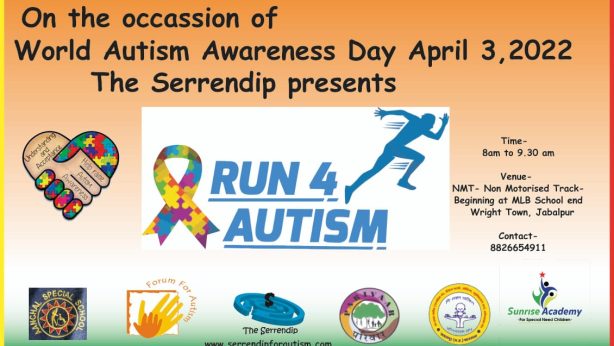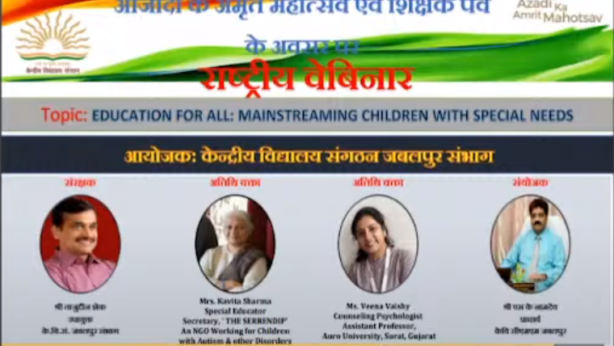INTRODUCTION TO AUTISM
Autism spectrum disorder, the name adopted in 2013, is a developmental disorder characterized by persistent problems in social communication and interaction, along with restricted and repetitive patterns of behavior, interests or activities.1 It replaces the older terms of autistic disorder, Asperger’s syndrome and other conditions envisioned on “the great continuum” of autism.2 Still, the defining features of the condition commonly referred to as “autism” remain essentially the same.
But what does autism look like? As you observe a person’s behavior, what might make you suspect he or she could have autism? To explore this question, we return to the very first written account of autism.
FIRST ACCOUNTS OF AUTISM: DEFINING CHARACTERISTICS
 It is likely that autism has existed through the ages, but the first ever clinical account of the disorder was published by Dr. Leo Kanner in 1943.3 Dr. Kanner, who developed the first child psychiatric service at a U.S. hospital, described a group of 11 children – eight boys and three girls – who had “autistic disturbances of affective contact.”4
It is likely that autism has existed through the ages, but the first ever clinical account of the disorder was published by Dr. Leo Kanner in 1943.3 Dr. Kanner, who developed the first child psychiatric service at a U.S. hospital, described a group of 11 children – eight boys and three girls – who had “autistic disturbances of affective contact.”4
Dr. Kanner based his report on direct observation, and much of what he set down has stood the test of time. He vividly depicted the essential features of autism, all of which are echoed in current-day diagnostic manuals. It is interesting to note that, just as in Kanner’s study, the rate of autism in males continues to be much higher than the rate in females.
Hans Asperger, an Austrian pediatrician, was working at nearly the same time as Kanner with a similar group of children on the other side of the Atlantic. A milder form of autism, Asperger syndrome, was named after him.
ABOUT AUTISM
As the word “spectrum” suggests, people with autism spectrum disorder (ASD) may have challenges that run the gamut from mild to severe, with different levels of ability and disability. Someone may have no functional speech, or may have a rich vocabulary. He or she may be intellectually disabled or have an average or above average IQ. He may be socially withdrawn or may be socially active, although in an oblivious, eccentric way. He may be fixated on lining up toys in a certain order, or have an encyclopedic knowledge of animals or another favorite topic.
To learn about the symptoms of autism spectrum disorder, please see our About Autism section.
NEWLY DIAGNOSED?
Parents of children who have just been diagnosed with ASD often feel both devastated and panicked. In our Newly Diagnosed section, we address some of the issues most on the minds of parents in this situation.
EXPLORING AUTISM TREATMENTS
When a child is diagnosed with an autism spectrum disorder, families face the next challenge: choosing the right treatments and therapies for their child. What are these treatments and therapies? How much do we know about them? How can a family best evaluate whether a treatment is working for their child?
In our Autism Treatments section, we explore current autism treatments, the evidence behind them, and what we are learning from the experience of individuals and families who have tried them.
CHALLENGING BEHAVIORS
Children with autism spectrum disorder may exhibit many behaviors their family, teachers and others find challenging. At the same time, those children often find the world at large a challenge, and the behavior of other people may be confusing to them.
What are the behaviors that distinguish a child with an ASD from his or her typically-developing peers? Although these will vary according to the severity of a person’s autism and their age, there are core issues that affect most people with autism spectrum disorder. See our Challenging Behaviors section to explore those topics.
ADULTS WITH AUTISM
Many of the children diagnosed when autism rates began rising in the 1990s are, or soon will be, adults. Visit our Adults with Autism section for articles on topics of interest to teenagers and adults, such as the transition to adult services, getting a driver’s license, employment, housing and romantic relationships.
SO MUCH STILL TO LEARN: A QUEST FOR ANSWERS
Since the 1940s, when Doctors Kanner and Asperger were putting their remarkable insights regarding socially different children on paper, we have learned a great deal. As you peruse this website and other sources of information on autism, you will see how much has been discovered about autism spectrum disorder from research in a wide variety of fields, including genetics, neuroscience, and cognitive psychology.
What will also become evident is how many questions remain unanswered. We still don’t know exactly what causes autism; we haven’t yet been able to identify specific subtypes of autism; and we still have very few proven treatments for autism.
The answers to our urgent questions will only come through research. The Interactive Autism Network was created to facilitate just that. (See About IAN.)
We hope individuals with ASD and their families will use this site to become informed consumers of autism research, and to become part of research studies themselves. Care providers, educators, researchers,
We salute each and every one of you who is committed to finding answers: individuals with autism and their families, researchers and educators, doctors and therapists, advocates and policy makers. We are here for you, and hope you will contact us with your questions, ideas, and concerns.
REFERENCES
- American Psychiatric Association. (2013). Diagnostic and statistical manual of mental disorders (5th ed.). Arlington, VA: American Psychiatric Publishing.
- Grandin, T. (2006). Thinking in pictures: My life with autism (Exp. ed.). New York: Vintage Books. (Pg. 47.)
- Volkmar, F., & Klin, A. (2005). Issues in the classification of autism and related conditions. In F. Volkmar et al. (Eds.), Handbook of Autism and Pervasive Developmental Disorders (pp.5-41). Hoboken, NJ: John Wiley & Sons.
- Kanner, L. (1943). Autistic disturbances of affective contact. Nervous Child, 2, 217-250.



